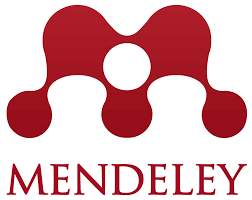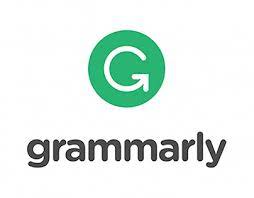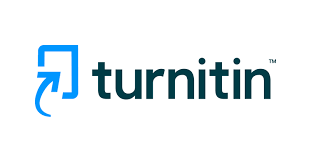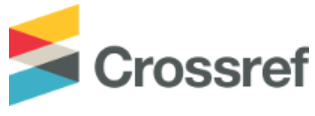Geometric Thinking Profile in Problem Solving Based on SOLO Plus Taxonomy
Abstract
The purpose of this study is to describe geometric thinking based on the SOLO Plus taxonomy. This research used qualitative method which involved 34 students of the mathematics education study program. Data collection is done by tests and interviews. Data analysis is done by triangulation which, includes data reduction, data presentation, and conclusion drawing. The results showed that subjects with high and moderate mathematical abilities were included in the Van Hiele category of geometric thinking analytically by connecting components and geometric properties that were interconnected. This analytical ability is categorized as multistructural by identifying information that is considered useful and has a relationship with the problem solving process. In ordering-multistructural geometric thinking, it is done by sorting and connecting properties accompanied by informal arguments. Deduction-semirelational geometric thinking is done by analyzing and explaining the relationships between shapes and being able to prove theorems deductively, giving reasons with formal proof but not reaching the truth. Meanwhile, subjects with a low ability to think are said to think analytically geometrically by connecting components and geometric properties and in problem solving have multistructural responses. In ordering thinking, it is done by sorting and connecting the properties found previously and providing informal arguments. In the problem solving process included in the pre-structural category, they do not understand the problem and the information provided and do something that has nothing to do with the problem that is given.
Keywords
Full Text:
PDFReferences
Amalia, R. (2017). Kemampuan berpikir matematis mahasiswa dalam menyelesaikan masalah geometri. EDU-MAT: Jurnal Pendidikan Matematika, 4(2), 118-125. http://dx.doi.org/10.20527/edumat.v4i2.2568
Ariyana, T., Fera, M., & Febrian, F. (2019). Analisis kesalahan siswa pada level multistructural berdasarkan taksonomi SOLO plus dalam menyelesaikan soal materi persamaan lingkaran. Lentera Sriwijaya: Jurnal Ilmiah Pendidikan Matematika, 1(1), 55–63. https://doi.org/10.36706/jls.v1i1.9569
Baeti, N., & Murtalib, M. (2018). Analisis keterampilan geometri siswa dalam memecahkan masalah geometri berdasarkan tingkat berpikir Van Hiele di MTs Muhammadiyah 1 Malang. 2(2), 39–50. https://doi.org/10.33627/sm.v2i2.96
Battista, M. T. (2011). Conceptualizations and issues related to learning progressions, learning trajectories, and levels of sophistication. The Mathematics Enthusiast, 8(3), 507–570. https://doi.org/10.54870/1551-3440.1228
Biggs, J. & Collis, K.F. (1982). Evaluating the quality of learning: The SOLO taxonomy. New York, NY: Academic Press.
Engelbrecht, J., Llinares, S., & Borba, M. C. (2020). Transformation of the mathematics classroom with the internet. ZDM Mathematics Education, 52(5), 825–841. https://doi.org/10.1007/s11858-020-01176-4
Fitri, R. (2017). Pengembangan perangkat pembelajaran berbasis pendekatan konstruktivisme untuk meningkatkan kemampuan pemahaman konsep pada materi persamaan lingkaran. JNPM (Jurnal Nasional Pendidikan Matematika), 1(2), 241-257. http://dx.doi.org/10.33603/jnpm.v1i2.562
Fitriah, I. (2017). Profil kemampuan siswa dalam menyelesaikan soal cerita matematika berdasarkan taksonomi SOLO plus ditinjau dari perbedaan kemampuan matematika. MATHEdunesa, 6(2). https://garuda.kemdikbud.go.id/documents/detail/1578022
Fitriani, N., Suryadi, D., & Darhim, D. (2018). Analysis of mathematical abstraction on concept of a three dimensional figure with curved surfaces of junior high school students. Journal of Physics: Conference Series, 1132 012037. http://dx.doi.org/10.1088/1742-6596/1132/1/012037
Gottfried, A. E., Fleming, J. S., & Gottfried, A. W. (2001). Continuity of academic intrinsic motivation from childhood through late adolescence: A longitudinal study. Journal of Educational Psychology, 93(1), 3-13. https://doi.org/10.1037/0022-0663.93.1.3
Gutiérrez, A., Jaime, A., & Fortuny, J. M. (2020). An alternative paradigm to evaluate the acquisition of the Van Hiele levels. Journal for Research in Mathematics Education, 22(3), 237-251. https://doi.org/10.2307/749076
Küchemann, D., & Hoyles, C. (2006). Influences on students’ mathematical reasoning and patterns in its development: Insights from a Longitudinal study with particular reference to geometry. International Journal of Science and Mathematics Education, 4(4), 581-608. https://doi.org/10.1007/s10763-006-9039-6
Mac an Bhaird, C., Nolan, B. C., O’Shea, A., & Pfeiffer, K. (2017). A study of creative reasoning opportunities in assessments in undergraduate calculus courses. Research in Mathematics Education, 19(2), 147–162. https://doi.org/10.1080/14794802.2017.1318084
Nurbaiti, N., & Arcana, I. N. (2019). Pengembangan YouTube pembelajaran persamaan garis singgung lingkaran di SMA menggunakan videoscribe. UNION: Jurnal Ilmiah Pendidikan Matematika, 7(2), 227–238. https://doi.org/10.30738/union.v7i2.4057
Sunardi, H. (2006). Pengembangan taksonomi SOLO menjadi taksonomi SOLO plus. Disertasi tidak dipublikasikan. Surabaya: Perpus Unesa.
DOI: https://doi.org/10.31002/ijome.v5i2.5864
Refbacks
- There are currently no refbacks.
Copyright (c) 2022 Indonesian Journal of Mathematics Education

This work is licensed under a Creative Commons Attribution-NonCommercial-ShareAlike 4.0 International License.

This work is licensed under a Creative Commons Attribution-NonCommercial-ShareAlike 4.0 International License.
Indexed by:
ISSN: 2654-3907 (print) | 2654-346X (online)
Jalan Kapten Suparman No.39, Magelang, Jawa Tengah, Indonesia 56116
Phone (0293) 364113 Fax. (0293) 362438
Website : http://jurnal.untidar.ac.id/index.php/ijome









